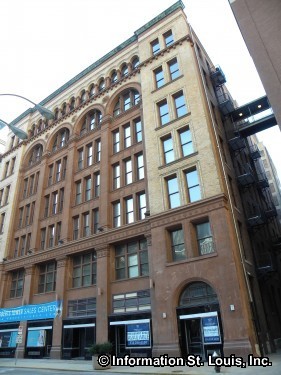History of Education in St Louis
As the population in St. Louis began to increase, so did the need for education. It was very common during the founding of St. Louis that only the rich could afford to have their children educated. Private tutors were hired, or children were sent to study abroad and to boarding schools. Religious institutions and influential men and women of St. Louis were all responsible for bringing education to the common people.
Catholic Church Influence
The Catholic people of St Louis were responsible for opening many education institutions. Before the twentieth century, they had opened a college and a university for men, three high schools for boys, six academies for girls and thirty-seven elementary schools in various parishes. Many of those early schools that the Catholic church and others founded are still in operation today.

Bishop Dubourg
Bishop DuBourg, the Catholic Bishop of Louisiana, had decided that St. Louis, rather than New Orleans, would be the headquarters for the diocese of Louisiana Territory. He came to St. Louis wanting to build both a college and a cathedral. He started St. Louis College in 1818 holding classes in a private residence near the riverfront. In 1829, at Bishop DuBourg's invitation, the Jesuits took over the administration of the College and in 1832 it received its formal charter from the State of Missouri as Saint Louis University and became the first University west of the Mississippi.
The Saint Louis University School of Medicine received its charter shortly thereafter in 1836 but was delayed in opening by financial setbacks. It held its first lectures in 1842 and quickly gained the reputation of having a high quality faculty.
Sisters of Visitation
In 1844, some of the Sisters of Visitation from Menard Academy in Kaskaskia Illinois came to St. Louis to start another school, Visitation Academy. Originally the Academy was housed in a building located in Soulard. The Academy then built a school as well as a convent that was a beautiful and elaborate Victorian building designed by Barnett, Haynes & Barnett in 1891 and located in the Visitation Park Neighborhood of St. Louis. The present location of Visitation, in Mid St. Louis County, was built in the early 1960's and the old building was razed in 1962 and the land used to create the Ivory Perry Park.
Brothers of the Christian Schools
The Brothers of the Christian Schools came to St. Louis in 1849 and at the time taught boys on three levels, elementary, secondary and college. The only educational institution still in existence in the St. Louis area that was founded by the Brothers is Christian Brothers College High School, locally known as CBC High School in West St Louis County.
Lutheran Influence
Trinity German Evangelical Lutheran Church in Soulard, St. Louis and Concordia Seminary in Clayton Missouri were founded in 1839 by Lutheran emigrants from Germany under the leadership of the first Lutheran ministers to come to St. Louis, Reverends Carl F.W. Walther and his brother Otto. The Lutherans also founded the Trinity Lutheran School which has now merged with four other schools to form King of Glory Lutheran School. Unfortunately, King of Glory closed its doors in 2011 due to several reasons.
The Lutheran Church-Missouri Synod was founded by Carl F.W. Walther in 1847 which in turn founded the Concordia Publishing House in 1869. The Lutherans opened schools as more parishes opened. The first Lutheran High School opened in 1857 in St Louis.
Public Schools Come to St. Louis
 The first public school of the St. Louis Public School District opened in the city of St. Louis in 1838 and by 1860, St. Louis had 23 elementary schools and a high school. That high school, Central High, was opened in 1853 and was the first public school west of the Mississippi River. Sumner High School was opened in 1875 and was the first public high school for black student west of the Mississippi River. Susan Blow, the founder of the kindergarten system, opened the first public kindergarten in North America in St Louis in 1873.
The first public school of the St. Louis Public School District opened in the city of St. Louis in 1838 and by 1860, St. Louis had 23 elementary schools and a high school. That high school, Central High, was opened in 1853 and was the first public school west of the Mississippi River. Sumner High School was opened in 1875 and was the first public high school for black student west of the Mississippi River. Susan Blow, the founder of the kindergarten system, opened the first public kindergarten in North America in St Louis in 1873.
The Founding of Washington University
Reverend William Greenleaf Eliot, who was a Unitarian minister, won a charter for Eliot Seminary in 1853 which was later renamed Washington University because the charter was dated February 22, Washington's birthday. Mary Institute, an academy for girls, also began at this time and was affiliated with Washington University. O'Fallon Polytechnic Institute, financed by John O'Fallon, was also founded at this time and eventually became Washington University's School of Engineering.
The Founding of Harris-Stowe State University

Harris-Stowe State University was created in 1954 when Harris Teachers College and Stowe Teachers College were merged. The two colleges were doing the same job up to that time, training future elementary school teachers for the St Louis Public school system. The difference was that Harris Teachers College was for whites only and Stowe Teachers College was for blacks only. The two colleges were merged in 1954 by the Board of Education of the St. Louis Public Schools as one of the first steps to integrate the school system. It was originally named Harris Teachers College but changed its name to Harris-Stowe Teachers College in recognition of the request made by the Stowe Teachers College alumni. The college eventually was admitted to the State system of higher education in 1979 and then in 2005 it was given "University" status. The University has many of its classes in what was the first Vashon High School building.
History of Education in St Louis Photo Gallery
Hey There! Do You Know What Your Home Is Worth Today?
Check Here Now!Events in St Louis History
Have You Considered A Career In Real Estate?
Learn MORE Here!St Louis Missouri Real Estate For Sale
New Construction For Sale: 1320
Condos For Sale: 697
Commercial For Sale: 1799
Acreage For Sale: 1263
Multi-Family 5+ For Sale: 103
Multi-Family 2-4 For Sale: 444
Lots For Sale: 3089
Total Properties For Sale: 18240






